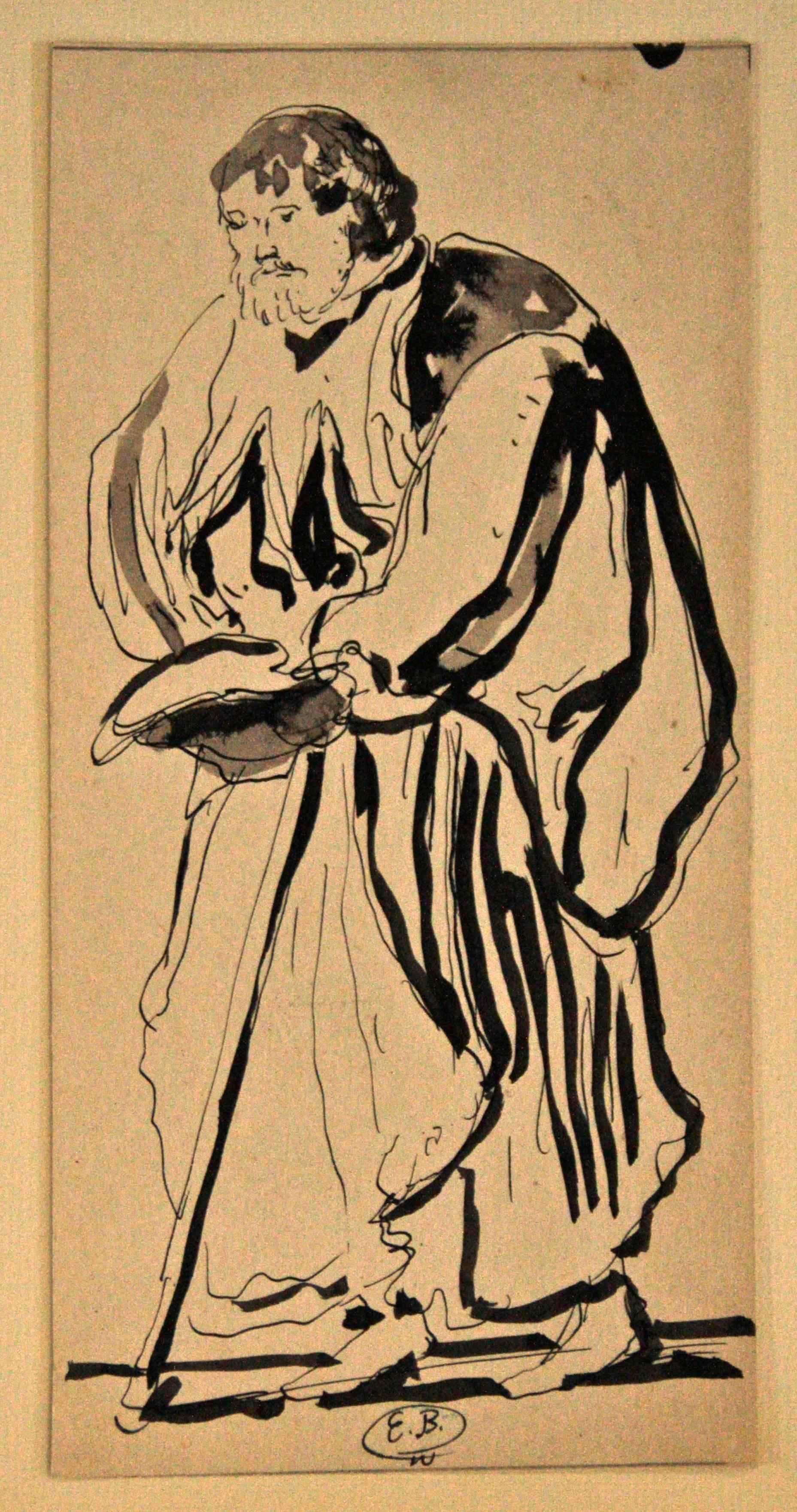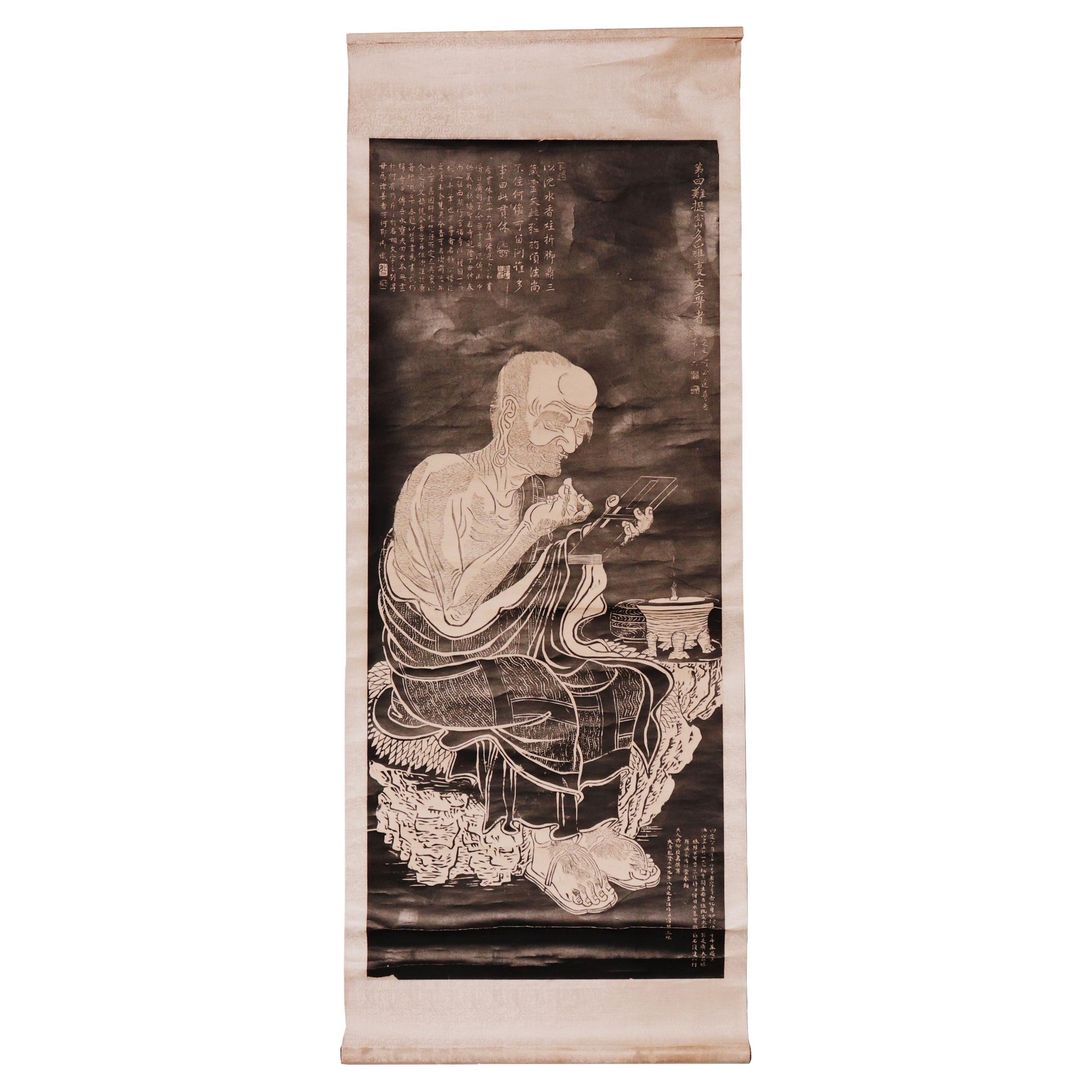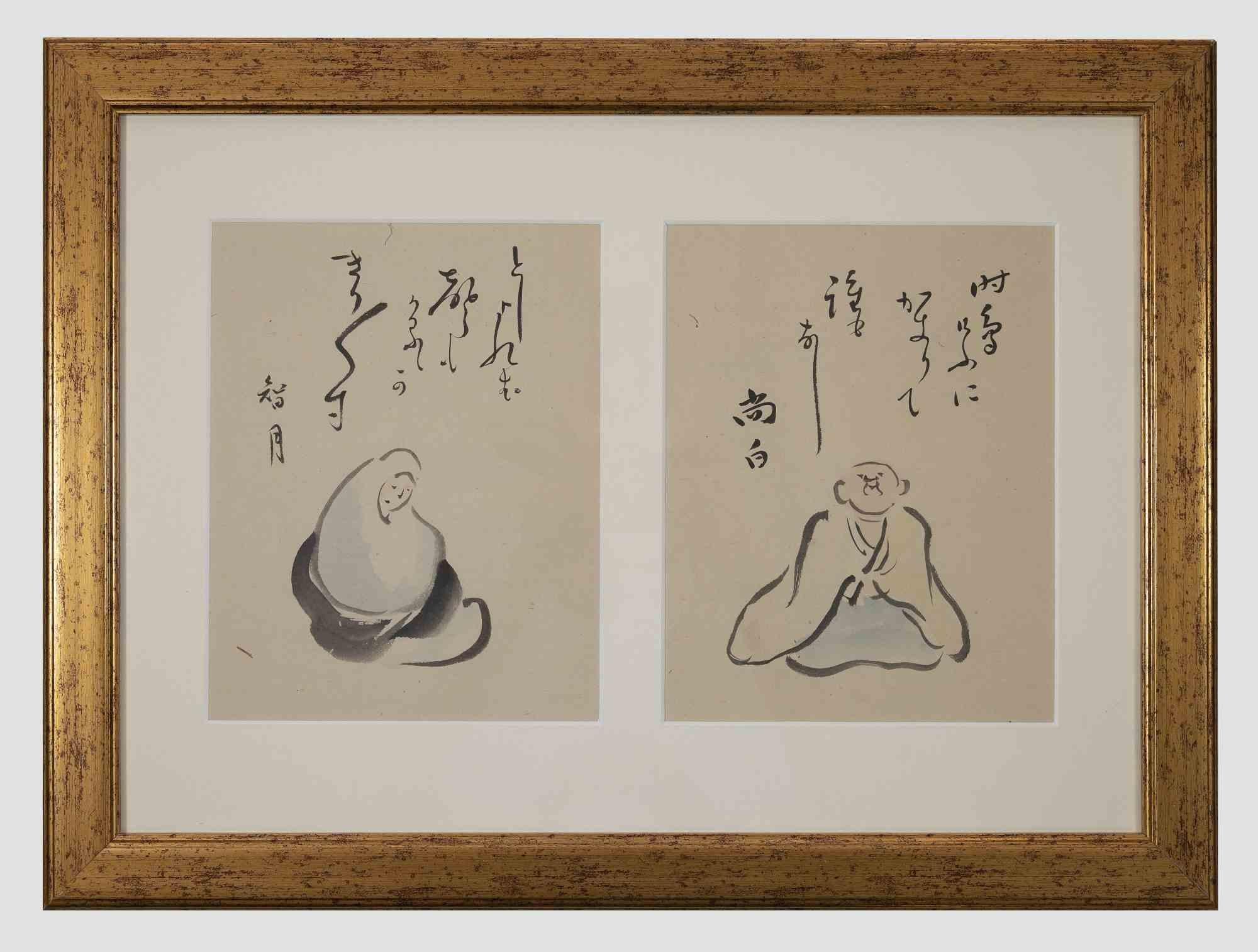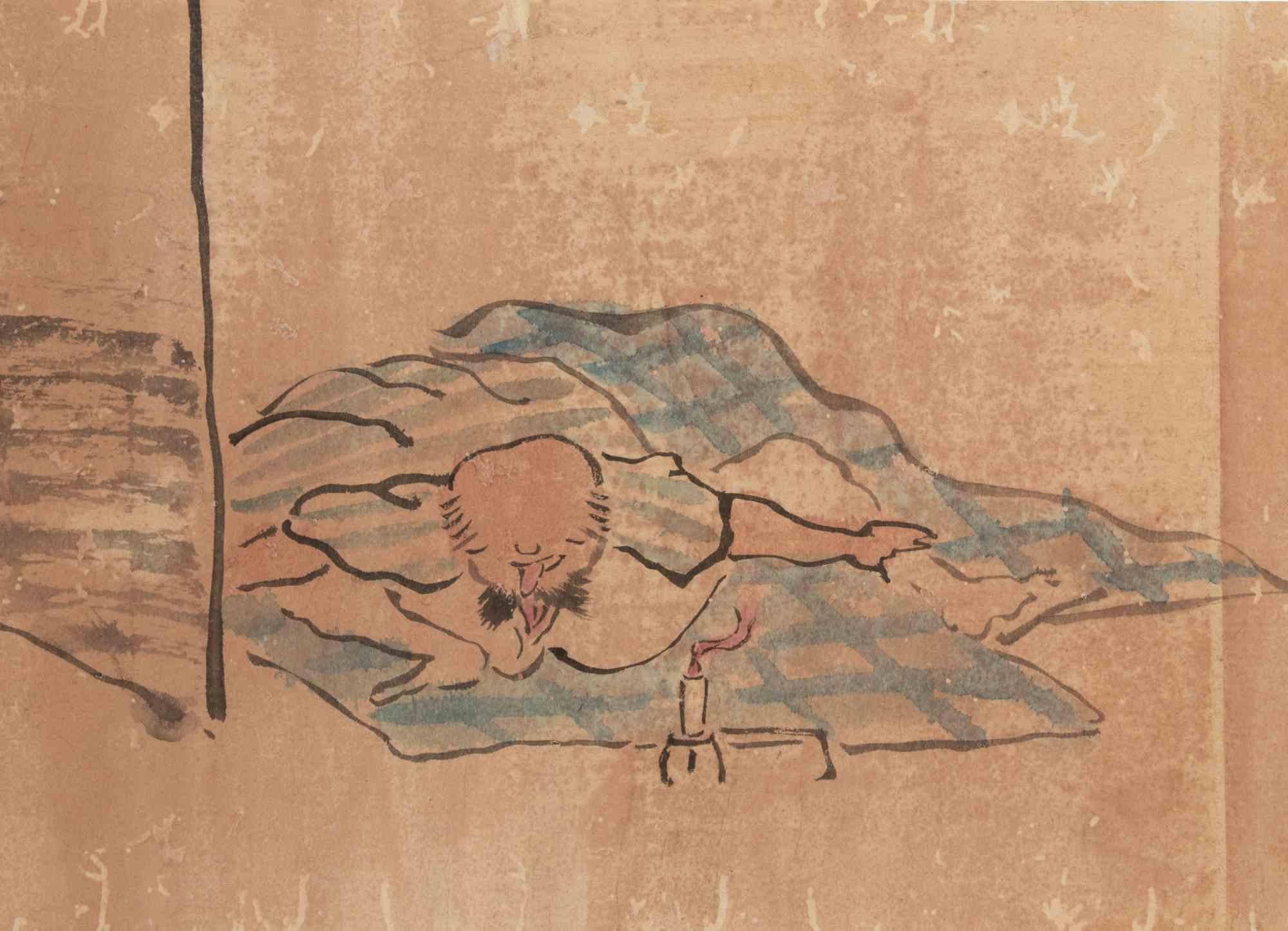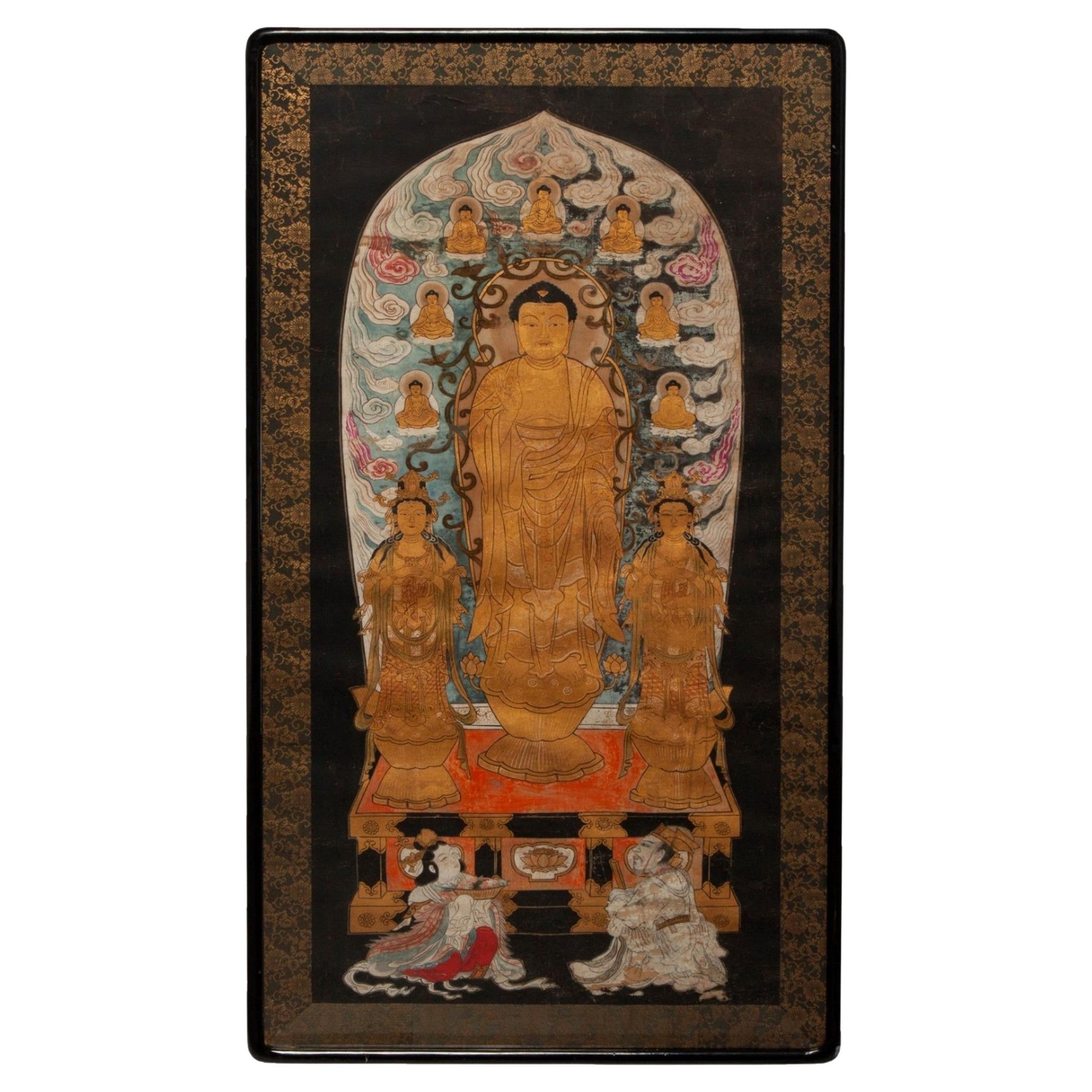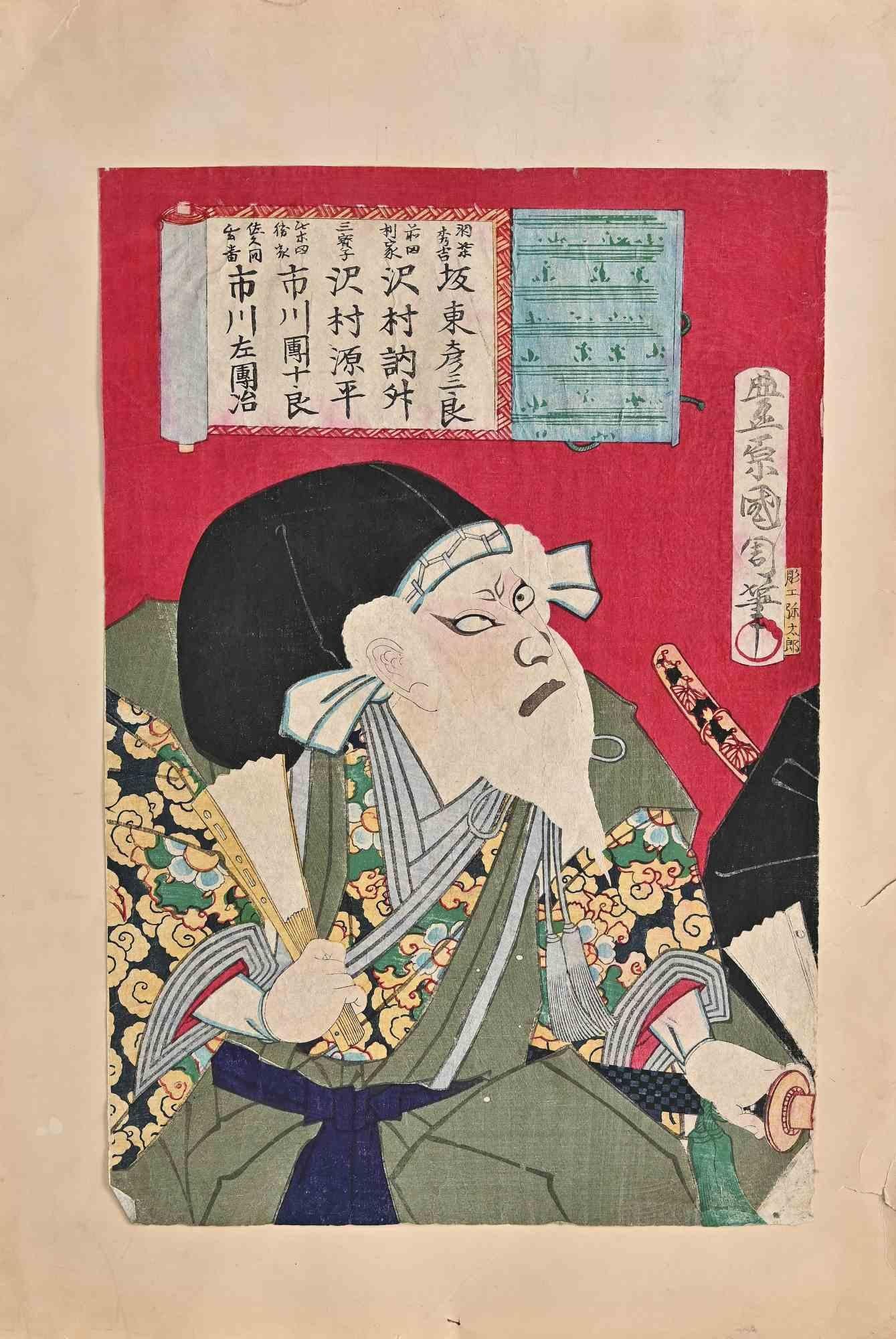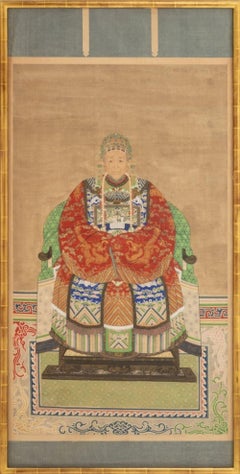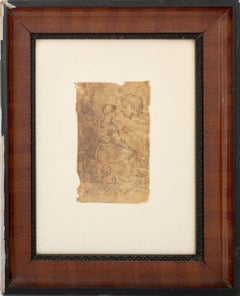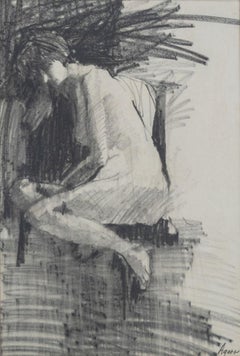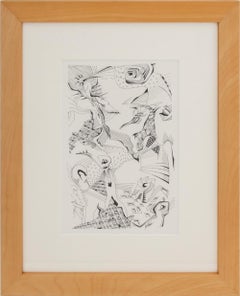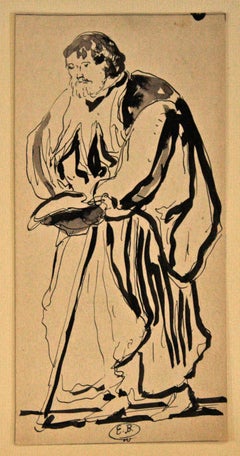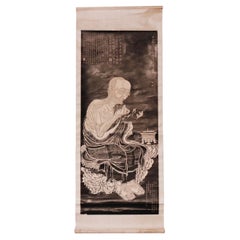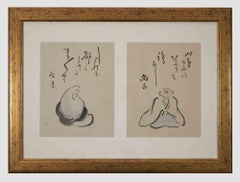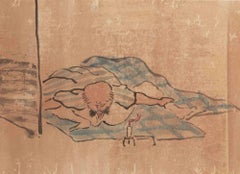Items Similar to Japanese Hotei Buddha Ink on Paper, 19th C.
Want more images or videos?
Request additional images or videos from the seller
1 of 10
UnknownJapanese Hotei Buddha Ink on Paper, 19th C.
$950
£716.94
€820.79
CA$1,339.81
A$1,470.95
CHF 767.40
MX$17,800.54
NOK 9,618.14
SEK 9,062.81
DKK 6,126.95
About the Item
Japanese School, Hotei Buddha Composition, Ink on Paper, 19th century, calligraphy and chop seal mark upper right, mounted to panel. Image: 45.5" H x 22.25" W; panel: 60" H x 27.5" W. Provenance: From a West 12th Street Estate.
- Dimensions:Height: 60 in (152.4 cm)Width: 27.5 in (69.85 cm)Depth: 1 in (2.54 cm)
- Medium:
- Period:
- Condition:Age-appropriate wear; some creases and old losses. Condition refers to the artwork only, it excludes the frame. We do not guarantee frame condition.
- Gallery Location:Astoria, NY
- Reference Number:Seller: 1197111stDibs: LU2845216519242
About the Seller
No Reviews Yet
Vetted Professional Seller
Every seller passes strict standards for authenticity and reliability
1stDibs seller since 2025
9 sales on 1stDibs
Typical response time: 14 hours
- ShippingRetrieving quote...Shipping from: Astoria, NY
- Return Policy
Authenticity Guarantee
In the unlikely event there’s an issue with an item’s authenticity, contact us within 1 year for a full refund. DetailsMoney-Back Guarantee
If your item is not as described, is damaged in transit, or does not arrive, contact us within 7 days for a full refund. Details24-Hour Cancellation
You have a 24-hour grace period in which to reconsider your purchase, with no questions asked.Vetted Professional Sellers
Our world-class sellers must adhere to strict standards for service and quality, maintaining the integrity of our listings.Price-Match Guarantee
If you find that a seller listed the same item for a lower price elsewhere, we’ll match it.Trusted Global Delivery
Our best-in-class carrier network provides specialized shipping options worldwide, including custom delivery.More From This Seller
View AllChinese Ancestral Portrait of Enthroned Noblewoman
Located in Astoria, NY
Chinese Ancestral Portrait of Enthroned Noblewoman, Gouache on Linen Mounted on Paper, circa 1900, depicting crowned and dressed female ancestor in ...
Category
Early 1900s Qing Figurative Drawings and Watercolors
Materials
Linen, Gouache
Old Master Figure Sketch Pencil on Vellum
Located in Astoria, NY
Old Master, Figure Sketch, Pencil on Vellum, 18th century, inscribed "G.26" lower right, wood frame. Image: 5.5" H x 3.5" W; frame: 13.75" H x 11" W x 1.25" D. Provenance: From a New...
Category
18th Century Old Masters Figurative Drawings and Watercolors
Materials
Vellum, Pencil
Signed Nude Figure Charcoal on Paper
Located in Astoria, NY
Contemporary School, Nude Figure, Charcoal on Paper, signed "Agorr" lower right, ebonized wood frame. Image: 20.5" H x 14" W; frame: 29" H x 21" W x 2" D. Provenance: From a Central ...
Category
20th Century Contemporary Nude Drawings and Watercolors
Materials
Paper, Charcoal
Contemporary School Surrealist Composition Ink
Located in Astoria, NY
Contemporary School, Surrealist Composition, Ink on Paper, illegibly signed "Ken ....?" lower right, wood frame. Image: 9.5" H x 6.25" W; frame: 16" H x 13" W. Provenance: From a Cen...
Category
21st Century and Contemporary Surrealist Abstract Drawings and Watercolors
Materials
Paper, Ink
Thai Illuminated Manuscript Leaves, 19th C.
Located in Astoria, NY
Thai Illuminated Manuscript Leaves, 19th century, ink and tempera on paper, five folded leaves together in a giltwood frame. Image: 51.5" H x 16.25" W; frame: 67.5" H x 36.5" W. Prov...
Category
19th Century Other Art Style Figurative Paintings
Materials
Paper, Ink, Tempera
Chinese Guanyin Patinated Bronze Sculpture
Located in Astoria, NY
Chinese Standing Guanyin Patinated Bronze Sculpture, the bodhisattva donning floral pattern robes and holding an articulated vase, atop a double lotus base. 47" H x 14" W x 13" D.
Category
20th Century Qing Figurative Sculptures
Materials
Bronze
You May Also Like
Philosopher - Original China Ink drawing by E. Berman - 1940 ca.
By Eugene Berman
Located in Roma, IT
Hand signed with the artist's monogram. Ink and watercolour on cardboard. Passepartout included.
This artwork is shipped from Italy. Under existing legislation, any artwork in Italy...
Category
1940s Modern Portrait Drawings and Watercolors
Materials
Ink
Antique Chinese Printed Ink Rubbing of Panthaka Arhat, (scroll mounted)
Located in Point Richmond, CA
Chinese ink rubbing printing depicting Panthaka Arhat, no.4 of the 16 arhat images immortalized in stone at the former stupa at Shengyin Temple. Depicted here sitting on a rock with a book in his left hand and snapping his fingers in his right hand, symbolic of the speed at which he obtained enlightenment, accompanied by a beggar’s bowl and an incense burner, complete with colophons and silk scroll mounting. The Emperor Qianlong ordered the stone stele to be carved in 1764 after the arhat designs painted by the famed artist Guanxiu (832-912). Even though the temple was destroyed in the Taiping rebellion, the steles remain and have been reinstalled at the Hangzhou Stele Forest. Condition: Creases from rolling, otherwise fine condition. Mounting: 58” x 22”. 19th Century. Ex Collection: Frank “Till” & Peggy Durdin, San Diego.
For other rubbings of this stele see:
Penn Museum, object number 2010-26-4
The Metropolitan Museum of Art AN#: 59.195.15
Fine Arts Library of Harvard University, record id: W280021_urn-3:FHCL:478850
For another example of this image rendered in jade and lacquer see: “Screen Paintings of Guanxiu’s Sixteen Arhats in the Collection of the Palace Museum” Luo Wehhua translated by Bruce Doar, Orientations, September 2010, p. 104. In this article the image is identified as the sixteenth arhat Abheda, It is explained in this article that Qianlong re-identified the arhats, thus the 16th Arhat attribution for this image. Also in this article the identical colophon by Qianlong above the image is translated as: “These accurate portraits of the Sixteen Arhats were created by the Tang Dynasty painter Guanxiu, as recorded in Xuanhe Huapu (Record of paintings in the Xuanhe Reign), and during the millennium from the Guangming reign period to the present day, the original works were to be found in Zhejiang, where they were housed in the collection of Shengyin Temple in Qiantang (Huangzhou). In spring of the dingchou year (1757) of his reign, the Qianlong emperor undertook a southern tour of inspection and stayed at an imperial lodge on the West Lake. He went to the temple to pay his respects and there he saw the arhats on display and wrote a description of these marvels. The sequence of the arhats and their names had been passed down since ancient times, but they did not correspond to their Sanskrit titles; the sequence of the arhat names conformed instead to the interpretation of the Sanskrit classics by the Zhangjia State Preceptor. The emperor penned the original names and positions in the sequence below each of the figures in accordance with the readings supplied in Tongwen Yuntong (Unified Rhymes), and below each he penned an encomium, which he signed. Then the images were returned to the collection, to be passed down as a perpetual treasure. Now, the fourth great arhat had long gone missing and we did not know where his painting was. But it was merely a trifling matter of matching the images with the names, and now surely we have found him! This I, the emperor, believe.”
All 16 of these rubbings can be found in the Rubel Chinese Rubbings Collection at the Fine Arts Library of Harvard University with the following descriptive historical note: “Rubbing from stele depicting No. 4 of 16 arhats (Lohans, Buddhist saints) -- Nan ti mi duo luo qing you, Panthaka Arhat. Original painting attributed to Guanxiu, 832-912. Inscriptions written by Hongli, Emperor Qianlong (Gaozong, 1711-1799) of Qing Dynasty. 7 seals of Qianlong follow the inscriptions. Script style: in xing shu. Shi liu zun zhe -- "The 16 noble ones" are 16 lohans. Lohans are also called "a-lo-han" based on the transliteration of the Sanskrit term "arhat." (Japanese: Rakan; Chinese: Lohan; Tibetan: Gnas-brtan). Arhats or Arahants are saints or sages said to have renounced nirvana (freedom from the cycle of suffering and rebirth), vowed to remain in the world to protect the Dharma and propagate the Law of the Buddha in order to devote themselves more effectively to the relief of human misery, like the Bodhisattvas. These 16 Arhats, personal disciples distinguished by the Buddha, formed part of the 500 claimed by tradition to have attended the First Council in Rajagrha. The names and abodes of these 16 arhats are given in a work entitled "Record on the Duration of the Law, spoken by the Great arhat Nadimitra," which was translated into Chinese by the famous pilgrim Xuanzang (596-664) in 654. 16 lohans are quite often represented, especially in China and Japan, in sculpture and painting, in poses and with attributes. Every lohan can be easily with special icongraphic characteristics. Guanxiu (Jiang Deyin or Deyuan, a Buddhist monk also named Master Chan Yue, 832-912) -- painter during late Tang to Five Dynasties, specialized in painting lohan figures. Legend has it that the first portraits of the 18 Lohans...
Category
Antique 19th Century Chinese Qing Prints
Materials
Paper
Oriental Figures - Original Drawing - 19th Century
Located in Roma, IT
Oriental figures is an original modern artwork realized by Anonymous artist in the late 19th Century.
Mixed colored watercolor.
The artwork is composed by two watercolors depicting...
Category
Late 19th Century Modern Figurative Drawings and Watercolors
Materials
Watercolor
Erotic Scene - Drawing attr. Kyosai Watanabe - Late 19th Century
Located in Roma, IT
Ink and watercolor realized in the late 19th Century and attributed to Kyosai Watanabe.
Bold and unusual erotic scene drawn with the artist's characteristic comic flair.
Good condi...
Category
Late 19th Century Modern Drawings and Watercolor Paintings
Materials
Ink, Watercolor
Antique Japanese Buddhist Ink & Color On Silk Painting Amida Triad Buddha
Located in Forney, TX
A beautiful framed antique Japanese School ink and color painting on silk, 19th century, finely detailed and richly colored, depicting Amida Triad, with two Bodhisattva attendants worshipping Buddha, on a gilt arabesque mat, in a black frame.
Provenance / Acquisition:
A Private Dallas Collector
Acquired from the highly reputable auction house Dallas Auction Gallery, Dallas, Texas. Summer Fine Arts and Antiques catalog.
Owned and curated by Reyne Hirsch, a notable media personality and expert in 20th century decorative arts. She's was a top appraiser for Antiques Roadshow...
Category
Antique 19th Century Japanese Edo Paintings and Screens
Materials
Metallic Thread
Old Samurai - Woodcut Print after Utagawa Kunisada - Late 19th Century
By Utagawa Kunisada (Toyokuni III)
Located in Roma, IT
Old Samurai is a Woodcut print realized in late 19 century after Utagawa Kunisada.
Good condition and Beautiful colored woodblock print, included a cardboard passpartout (46x32 cm...
Category
Late 19th Century Modern Figurative Prints
Materials
Woodcut
More Ways To Browse
Japanese Paper Art
Unknown Buddha
Japanese Ink Art
Black Buddha
Japanese Buddha
Antique Japanese Drawings
Antique Japanese Watercolor Painting
Hotei Japan
Zuniga Pastel
Betty Rees Heredia
Blair Hobbs
Breastfeeding Painting
Carl Fredrik Reutersward
Conger Metcalf
Dora Carrington
Drawings And Watercolor Indonesia
E Nevil
Ellsworth Young
